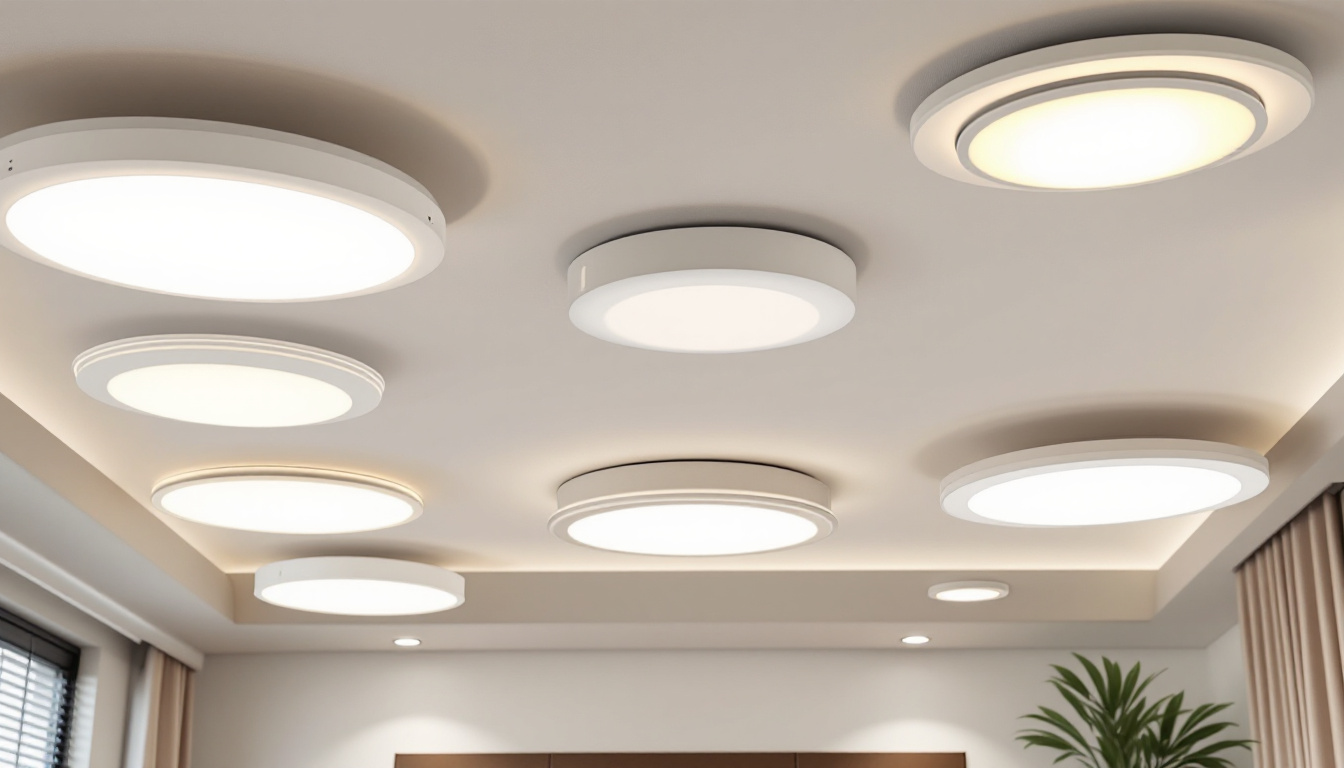

Lighting plays a crucial role in enhancing the aesthetics and functionality of a space. For lighting contractors, understanding the various options available, including false ceiling light covers and their alternatives, is essential for delivering quality installations. This article will explore the benefits and drawbacks of false ceiling light covers compared to other lighting solutions, helping contractors make informed decisions for their projects.
False ceiling light covers are designed to conceal light fixtures while providing a polished, finished look to a ceiling. These covers can be made from various materials, including plastic, glass, or metal, and come in numerous designs to suit different architectural styles. They are particularly popular in commercial spaces, where aesthetics and functionality must work in harmony. The versatility of these covers allows them to be used in diverse settings, from sleek modern offices to cozy restaurants, making them a favored choice among designers and architects alike.
One of the primary advantages of false ceiling light covers is their ability to diffuse light evenly throughout a room. This helps to reduce harsh shadows and creates a more inviting atmosphere. Additionally, these covers can be used to integrate lighting into the overall design of a space, allowing for creative lighting solutions that enhance the architectural features of a room. For instance, using frosted glass covers can soften the brightness of LED lights, providing a warm glow that is perfect for relaxation areas, while metallic finishes can add a touch of elegance to more formal environments.
Moreover, false ceiling light covers can also serve as a protective barrier for the light fixtures themselves. By shielding bulbs and fixtures from dust and damage, they can prolong the lifespan of the lighting components, ultimately reducing maintenance costs for clients. This durability is particularly beneficial in high-traffic areas, where fixtures are more prone to wear and tear. Furthermore, many modern covers are designed to be easily removable, allowing for quick access to the fixtures for maintenance or replacement without the need for extensive renovations.
Despite their many benefits, false ceiling light covers are not without challenges. Installation can be more complex than traditional lighting solutions, requiring careful planning and execution. Contractors must ensure that the covers are compatible with the existing ceiling structure and that they allow for adequate ventilation to prevent overheating. This complexity can sometimes lead to increased labor costs, which should be factored into the overall project budget. Additionally, the weight of certain materials, like glass or metal, may necessitate additional structural support, further complicating the installation process.
Additionally, the aesthetic appeal of false ceiling light covers can vary significantly based on design and material choices. While some options may enhance the overall look of a space, others may clash with the intended design theme, leading to potential dissatisfaction from clients. It’s crucial for designers to collaborate closely with clients to select the right covers that not only meet functional requirements but also align with the desired aesthetic vision. Furthermore, trends in interior design are constantly evolving, so staying updated on the latest styles and innovations in false ceiling light covers can help ensure that the chosen solutions remain relevant and appealing for years to come.
While false ceiling light covers have their place in modern lighting design, several alternatives can also be considered. Each option has unique characteristics that may better suit certain projects or client preferences.
recessed lighting, also known as can lighting or pot lights, is a popular alternative to false ceiling light covers. These fixtures are installed directly into the ceiling, creating a clean, streamlined look that can enhance the overall aesthetic of a room.
One of the main benefits of recessed lighting is its versatility. It can be used for general illumination, accent lighting, or task lighting, making it suitable for various applications. Additionally, recessed lights can be easily adjusted to focus on specific areas, allowing for greater control over the lighting design. The ability to choose different bulb types, such as LED or halogen, further enhances the adaptability of recessed lighting to meet energy efficiency standards and personal preferences.
Moreover, recessed lighting can contribute to a room’s ambiance by providing soft, diffused light that minimizes harsh shadows. This feature is particularly beneficial in spaces like living rooms or bedrooms, where a warm and inviting atmosphere is desired. With the right placement and dimmer switches, homeowners can create a dynamic lighting scheme that changes with the time of day or activity.
surface-mounted fixtures are another alternative that lighting contractors may consider. These fixtures are installed directly onto the ceiling surface and come in a wide range of styles, from modern to traditional. Surface-mounted fixtures can provide an effective lighting solution without the need for extensive installation work.
One of the key advantages of surface-mounted fixtures is their ease of installation. Unlike false ceiling light covers, which may require modifications to the ceiling structure, surface-mounted fixtures can be installed quickly and efficiently. This can save contractors valuable time and labor costs, making them an attractive option for many projects. Additionally, surface-mounted fixtures can be a focal point in a room, adding character and style while providing functional lighting.
Furthermore, these fixtures often come equipped with advanced features such as integrated smart technology, allowing users to control the lighting remotely or set schedules for different times of the day. This not only enhances convenience but also promotes energy efficiency by ensuring that lights are only on when needed. As design trends evolve, surface-mounted fixtures are increasingly being designed with aesthetics in mind, offering sleek finishes and unique shapes that can complement a variety of interior styles, from industrial chic to minimalist elegance.
When selecting between false ceiling light covers and their alternatives, several factors should be taken into account. Understanding these considerations can help lighting contractors make informed decisions that align with their clients’ needs and preferences.
Every project has unique requirements that can influence the choice of lighting solutions. For instance, the intended use of the space, the ceiling height, and the overall design aesthetic should all be considered. In commercial settings, where functionality and aesthetics must coexist, false ceiling light covers may offer the best of both worlds.
In contrast, residential projects may benefit from the simplicity and versatility of recessed or surface-mounted fixtures. Contractors should assess the specific needs of each project to determine the most suitable lighting solution.
Understanding the preferences of clients is crucial in the decision-making process. Some clients may prioritize aesthetics and opt for false ceiling light covers to achieve a seamless look, while others may prefer the practicality and ease of maintenance offered by surface-mounted fixtures.
Engaging in open communication with clients can help contractors gauge their preferences and expectations. This collaborative approach can lead to more successful project outcomes and increased client satisfaction.
Budget constraints are an inevitable factor in any project. False ceiling light covers may involve higher initial costs due to the complexity of installation and the materials used. On the other hand, alternatives like recessed or surface-mounted fixtures may offer more budget-friendly options without compromising on quality.
Contractors should work closely with clients to establish a realistic budget and explore various lighting solutions that align with their financial parameters. This can help ensure that the chosen lighting solution meets both aesthetic and functional needs while remaining within budget.
Installation is a critical aspect of any lighting project. The complexity of installation can vary significantly between false ceiling light covers and their alternatives, impacting the overall project timeline and labor costs.
False ceiling light covers often require more intricate installation processes, including precise measurements and modifications to the ceiling structure. This can lead to longer installation times and increased labor costs. Contractors must be prepared to navigate these complexities and ensure that the installation is executed flawlessly.
In contrast, recessed and surface-mounted fixtures typically offer simpler installation processes. These fixtures can often be installed quickly, allowing contractors to complete projects more efficiently. This can be particularly advantageous in fast-paced environments where time is of the essence.
Proper ventilation and heat management are crucial considerations when installing any lighting solution. False ceiling light covers must be installed with adequate space for airflow to prevent overheating, which can lead to premature fixture failure.
Contractors should ensure that any lighting solution they choose allows for proper heat dissipation. This is particularly important in commercial settings where lighting is used for extended periods. Understanding the heat output of various fixtures and planning for adequate ventilation can help avoid potential issues down the line.
Choosing the right lighting solution is essential for lighting contractors looking to deliver high-quality installations. False ceiling light covers offer a unique blend of aesthetics and functionality, making them suitable for many applications. However, alternatives like recessed and surface-mounted fixtures can also provide effective solutions, depending on the specific needs of each project.
By considering project requirements, client preferences, budget constraints, and installation complexities, contractors can make informed decisions that lead to successful outcomes. Ultimately, the goal is to create well-lit spaces that enhance both the functionality and beauty of a room, ensuring client satisfaction and long-lasting results.
Ready to elevate your lighting installations with the perfect blend of quality and value? Look no further than LumenWholesale for all your lighting needs. Our extensive selection of spec-grade lighting products is designed to meet the highest industry standards, ensuring you deliver exceptional results every time. With unbeatable wholesale prices and the convenience of free shipping on bulk orders, you can trust LumenWholesale to provide premium lighting solutions that fit your budget. Don’t let inflated markups dim your project’s potential. Choose LumenWholesale and experience the difference in quality, affordability, and convenience. Start browsing our collection today and take the first step towards brighter, more beautiful spaces at the best value. Wholesale Lighting at the Best Value.

Discover essential insights and expert advice on selecting and installing big temp LED fixtures for lighting contractors.

Discover why opting for local distributors when purchasing grow lights in bulk might not be the best decision.

Discover essential insights for lighting contractors on security and motion sensor lights.

Discover the ins and outs of solar lighting tailored specifically for lighting contractors.
Get notified when NEW deals are released.
Optimize your budget with wholesale discounts.
Only top-quality, specification-grade lighting products.
No additional costs at checkout - what you see is what you pay.
We understand the unique needs of contractors.